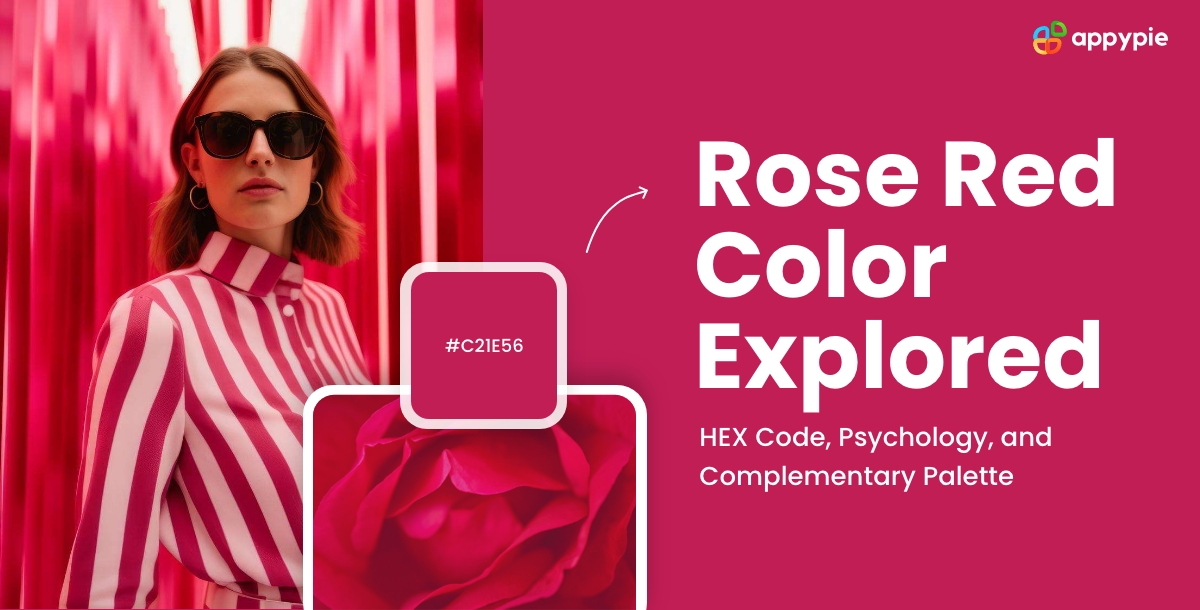Rose Red Color Explored: HEX Code, Psychology, and Complementary Palette

In this blog, we are going to discuss a hue that is associated with love, passion and romance. I think you get the idea. We are talking about rose red. It's a vibrant color that got its name as rose red in England in 1382. Let's explore this beautiful color in depth.
Exploring rose red color is important to those who want to make their ordinary designs extraordinary. With the advent of AI design tools, the process of using rose red in artwork has become not only more accessible but also more interesting.
What Color is Rose Red?
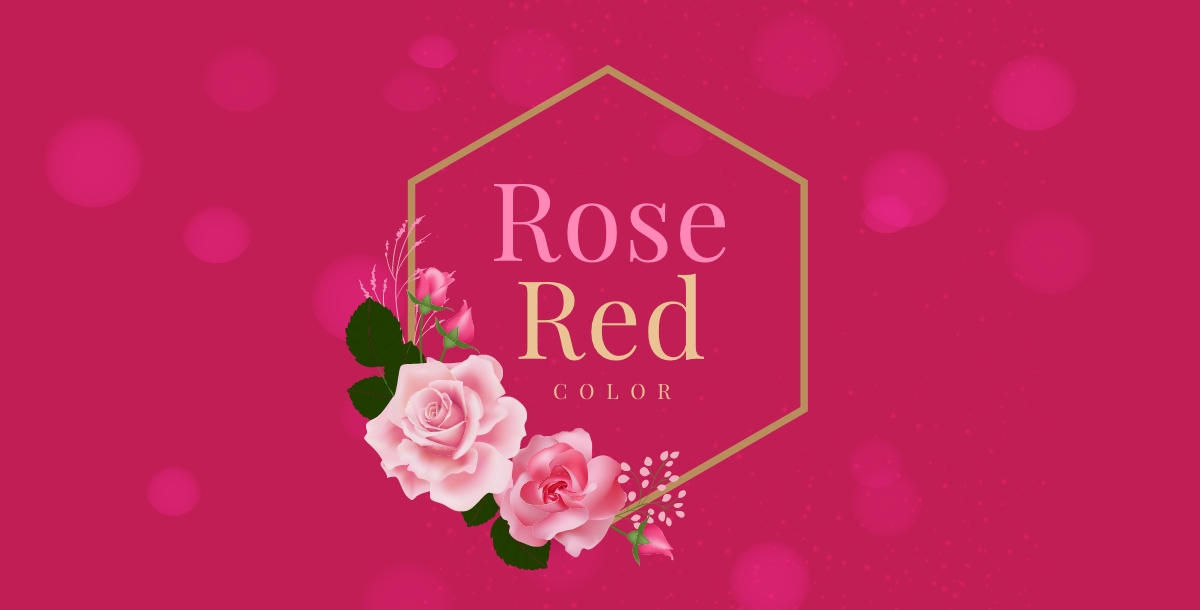
The rose red color is a beautiful and appealing hue that is often associated with romance, passion, and love. It is a pleasant, warm color that can add elegance to any design or artwork. But what exactly is rose red, and how is it different from other shades of red?
Rose red is a reddish-pink color. temperature leans more towards pink color than it does towards the color red. It is often referred to as being gentle, warm and inviting in nature. To capture the exact shade of rose red, you can use the rose red hex code #F5978E or the RGB values (245, 151, 142). For those who prefer physical samples, the Pantone rose red color code is 16-1548 TCX.
The History of Rose Red
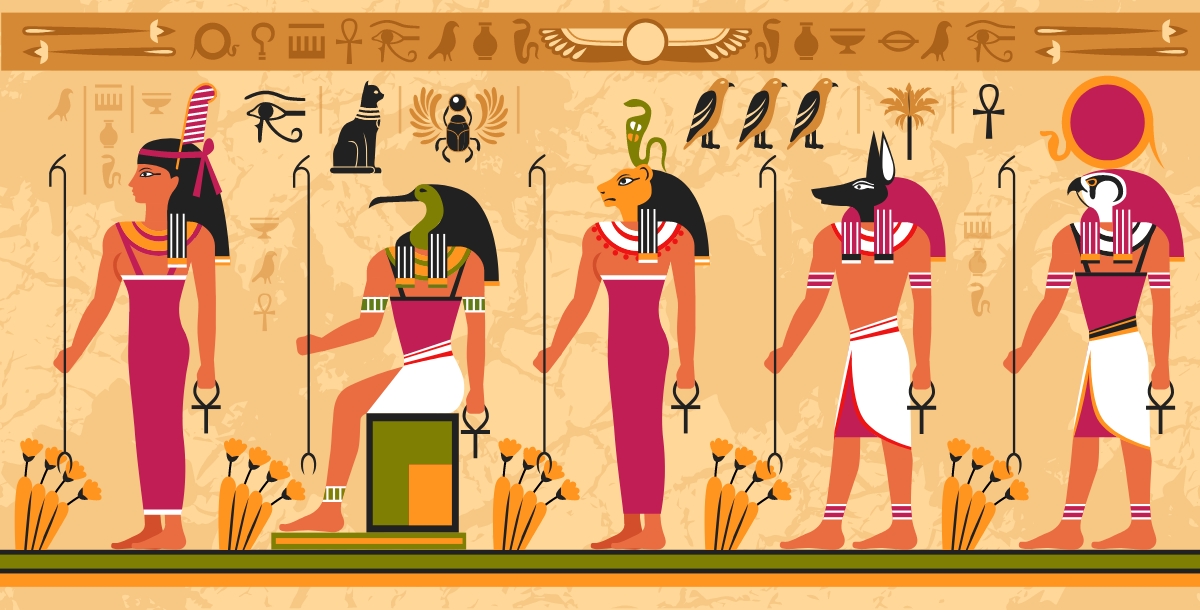
Rose-red has a rich and varied history that dates back thousands of years. Originally derived from the petals of roses, this color was highly prized in ancient civilizations such as Egypt, Greece, and Rome. In Egyptian mythology, rose red was associated with the goddess Isis, who was often depicted wearing a red color dress. In Greek mythology, rose red was one of the colors of the goddess Aphrodite, who represented love, beauty, and fertility.
Over time, rose red became a symbol of love, passion, and romance, appearing in countless works of art, literature, and music. In the medieval period, rose red was often used in illuminated manuscripts and religious art to represent the blood of Christ or the flames of hell. In the Renaissance, rose red was a favorite color of artists such as Titian, who used it to create sensual portraits of women.
Today, rose red remains a popular choice for designers and artists seeking to evoke emotion and beauty in their creations. From rose red wallpaper to rose red images, this color continues to inspire and delight people around the world.
Rose Red: Psychology Behind this Hue
Rose red is more than just a pretty color; it also carries profound psychological significance. Associated with love, compassion, and nurturing, rose red can evoke feelings of warmth, comfort, and security. At the same time, rose red can also signify confidence, power, and ambition, making it a versatile color that can adapt to various contexts and messages.
According to color theory, rose red is a secondary color that is created by mixing red and pink. Red is a primary color that represents energy, passion, and excitement, while pink is a tertiary color that represents love, tenderness, and sensitivity. When these two colors are combined, they create a balanced and harmonious hue that can evoke a wide range of emotions and associations.
In terms of complementary colors, rose red pairs well with shades of green color, such as forest or olive green color. This combination creates a striking contrast that can add depth and interest to any design. Other similar hues to rose red include burgundy, magenta, fuchsia, and pink. These colors share many of the same qualities as rose red but have different intensities and undertones.
How Can You Make Rose Red Color?
Creating the perfect shade of rose red requires a delicate balance of ingredients and techniques. One approach is to start with a base of red paint and gradually add small amounts of pink and white color until the desired hue emerges. Another method is to use a color mixer to experiment with different shades and tones until the ideal rose red appears.
To make a digital version of Rose Red, you can use the hex code #F5978E as a reference. This code corresponds to the RGB values (245, 151, 142), which can be used to create a precise and consistent shade of rose red in graphic design software. Additionally, you can use online tools such as the Appy Pie’s Color Wheel to adjust and refine the color until it matches your vision.
Companion of Rose Red Color
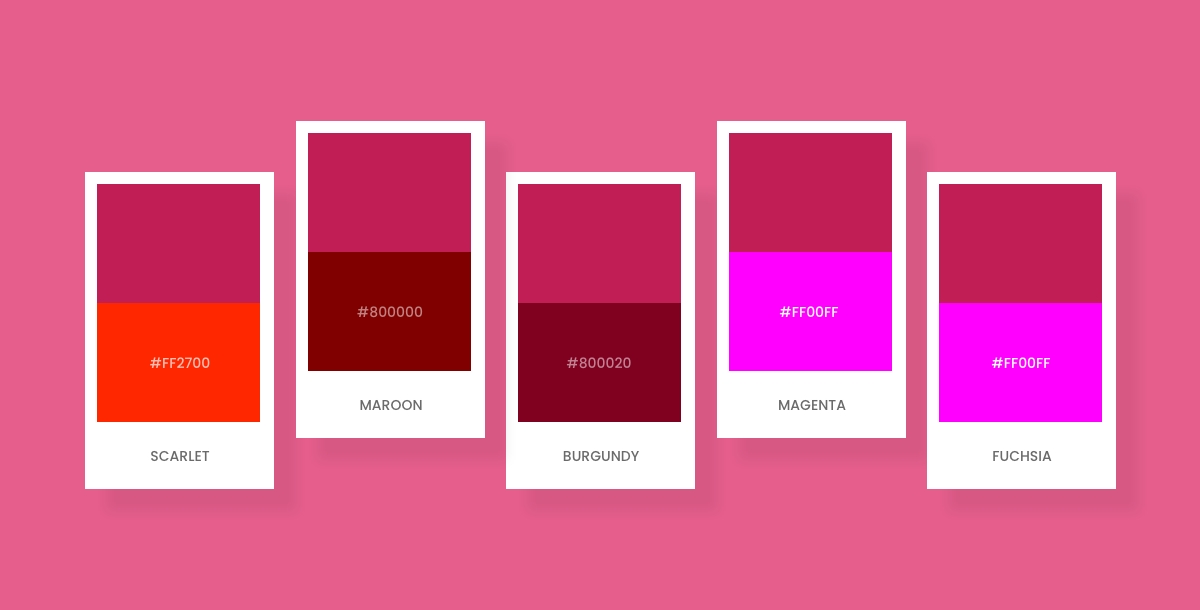
Rose red is a versatile color that pairs well with a variety of companions, from bold and vibrant hues to subtle and subdued tones. Some of the best color combinations for rose red include:
- Scarlet Color: The scarlet color is a bright, fire engine red that exudes energy and passion. Consider using scarlet for accents or smaller elements, allowing rose red to take center stage. This creates a visually interesting contrast with a cohesive red theme.
- Maroon Color: Maroon color is a dark, brownish-red that evokes a sense of stability and tradition. Maroon provides a sophisticated and grounding contrast to rose red's brightness. Use maroon for larger areas like furniture or backgrounds, and let rose red add pops of color through accents or accessories. This combination is ideal for creating a warm and inviting atmosphere in home decor or adding a touch of elegance to formal wear.
- Burgundy Color: Burgundy color is a deep and rich wine color that complements rose red's warmth and sophistication. Great for formal events, home decor, and fashion.
- Magenta Color: Magenta color is a bright and bold purple-red that amplifies rose red's energy and excitement. Excellent for marketing materials, social media graphics, and product packaging.
- Fuchsia Color: Fuchsia color is a vivid and electric pink-purple that adds a modern and edgy twist to rose red's classic charm. Perfect for tech gadgets, accessories, and youth culture.
Whether you're designing a website, creating a logo, or choosing a color scheme for your home, the rose red color offers a world of creative possibilities. By understanding the history, psychology, and best practices for using rose red, you can unlock its full potential and create stunning and memorable designs that capture the imagination and inspire the senses.
Similar Colors to Rose Red
While rose red is a unique and distinctive color, it shares certain characteristics with other hues on the color spectrum. Some similar colors to rose red include:
- Red Orange Color: Red orange color is a vibrant and energetic hue that combines the warmth of red with the brightness of orange. Ideal for sports teams, food and drink brands, and other contexts that require a bold and dynamic color palette.
- Coral Color: Coral color is a warm and inviting shade that blends the pinkness of rose red with the orange tones of peach. Perfect for tropical destinations, beachwear, and other contexts that evoke relaxation and fun.
- Salmon Color: Salmon color is a soft and subtle hue that combines the warmth of pink color with the earthiness of orange color. Great for natural and organic products, health and wellness brands, and other contexts that emphasize wholesomeness and authenticity.
- Brick Red: A rich shade that suggests stability, reliability, and tradition. Ideal for construction companies, real estate agencies, and other businesses that want to project a solid and trustworthy image.
- Plum: A dark and mysterious shade that combines the depth of purple with the sweetness of red. Great for fashion, cosmetics, and other industries that value glamour, style, and individuality.
When it comes to complementary colors for rose red, colors like navy blue, charcoal gray, and gold are great choices. These colors provide a strong and stable foundation that allows rose red to shine and stand out.
Using Rose Red Color in Design
When it comes to using rose red in design, there are several best practices to keep in mind. Some of them are as follows:
- It's important to use rose red sparingly and strategically. While rose red is a beautiful and eye-catching color, too much of it can be overpowering and distracting. Instead, use rose red as an accent color to highlight key elements and draw attention to specific areas of your design.
- Consider the context and message of your design. Rose red is a versatile color that can convey a wide range of emotions and associations, from love and passion to power and ambition. Choose the right shade and tone of rose red based on the mood and tone of your design, and use it consistently across all elements and touchpoints.
- Think about the composition and layout of your design. Rose red is a warm and inviting color that can create a sense of intimacy and closeness. Use it to frame and highlight important information, or to create a focal point that draws the viewer's eye. At the same time, be careful not to overcrowd or clutter your design, as this can detract from the impact and effectiveness of the rose red color.
- Consider the accessibility and legibility of your design. Rose red is a bold and vibrant color that can be difficult to read or interpret, especially for viewers with visual impairments or color blindness. Use sufficient contrast and whitespace to ensure that your design is accessible and easy to understand, and test it with a diverse group of users to ensure that it works for everyone.
Rose Red HEX Code: Exploring the Digital Space
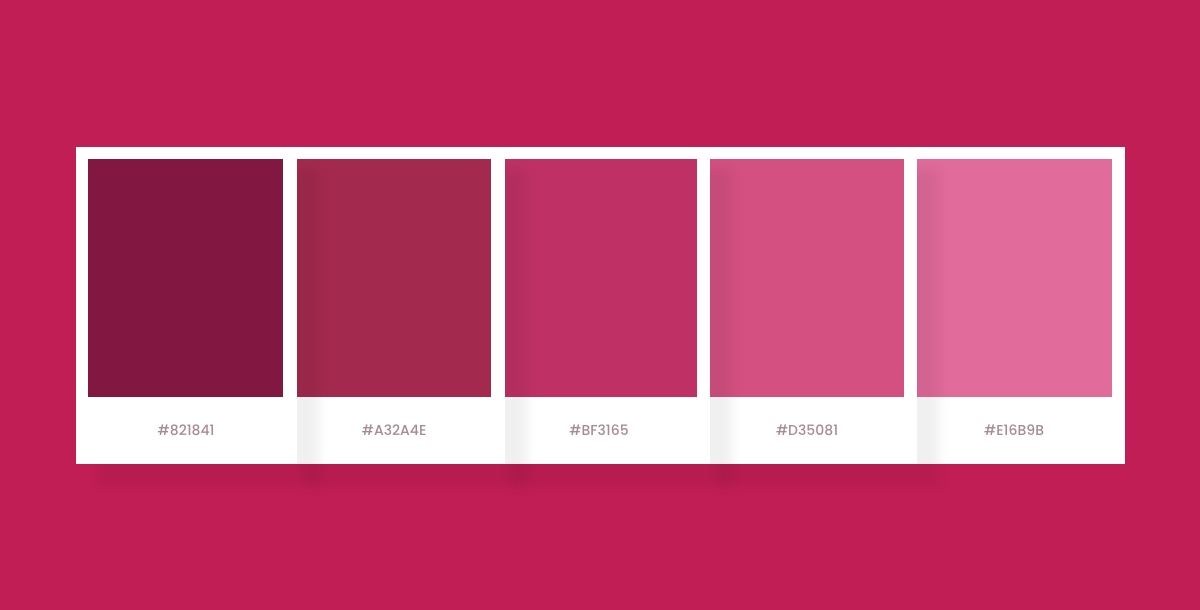
To create stunning designs using rose red, it's essential to understand HEX codes and how they work. Here are some tips to get started:
- Understanding HEX Codes: HEX codes are six-digit codes that represent colors. By using HEX codes, designers can precisely define the exact shade they want, ensuring consistency and accuracy across all elements and touchpoints.
- Know the HEX code for rose red: The HEX code for rose red is #FF007F. This soft and romantic shade will be your starting point for creating stunning designs.
- Experiment with lighter shades: To create lighter variations of rose red, you can try HEX codes like #FF69B4 (hot pink) or #FFB6C1 (light pink). These shades offer a softer and more subtle alternative to the boldness of rose red.
- Explore darker shades: If you want deeper and richer tones of rose red, consider HEX codes such as #FF0040 (deep pink) or #C70039 (dark red). These colors offer a more dramatic and intense look, perfect for fashion, cosmetics, and other industries that value glamour and style.
- Mix with complementary colors: Rose red pairs wonderfully with complementary colors like #00FFFF (cyan) or #00FF00 (lime green). Experiment with these combinations to create eye-catching designs that pop and stand out.
- Play with neutrals: Rose red also works well with neutral colors like #FFFFFF (white) or #000000 (black). These combinations offer a modern and sophisticated look, perfect for minimalist and contemporary designs.
Enhance Your Design Skills and Craft Stunning Graphics with Appy Pie’s Image Color Picker
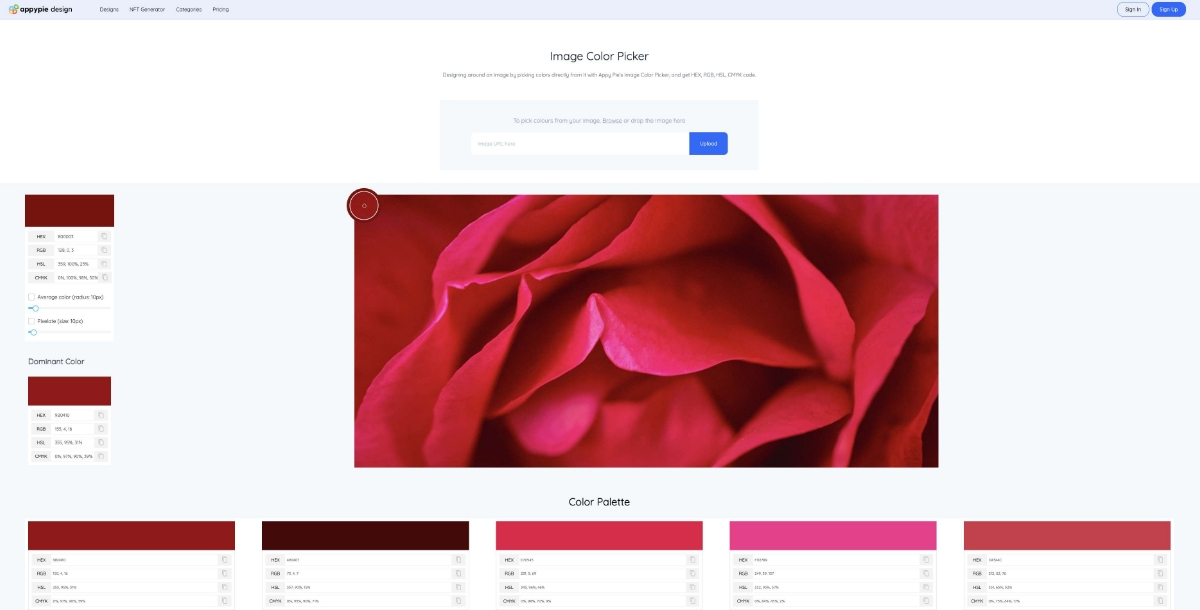
Designing visually appealing graphics can be a daunting task, especially if you’re not familiar with color theory. However, with Appy Pie’s image color picker, enhancing your design skills and creating gorgeous graphics has never been easier. Here’s a step-by-step guide to using Appy Pie’s AI Image Color Picker tool to create stunning graphics:
- Choose an Image: Either choose an image from your computer or enter an image URL, and the image will be uploaded to the screen.
- Pick a Color: You can now pick any color on this image using your mouse pointer.
- Analyze Color Codes: Once you choose the color, you will have HEX, RGB, HSL, and CMYK codes for the color displayed on your screen.
- Preview Your Color Palette: As you scroll down, you will also get an entire palette curated for you directly from the image!
- Save and Export Your Design: Finally, save your color palette and use it in your design. Appy Pie’s AI Image Color Picker tool allows you to export your color palette as a PNG or SVG file, making it easy to use in your design software of choice.
With Appy Pie’s Image Color Picker tool, enhancing your design skills and creating stunning graphics has never been easier. By following these simple steps, you can create a visually appealing color palette that will take your designs to the next level.
Conclusion
Rose red is a beautiful and versatile color that offers a world of creative possibilities for designers, artists, and anyone looking to add a touch of warmth, charm, and elegance to their creations. By understanding the history, psychology, and best practices for using rose red, you can unlock its full potential and create stunning and memorable designs that capture the imagination and inspire the senses.
So whether you're designing a website, creating a logo, or choosing a color scheme for your home, consider using rose red as a primary or accent color. With its rich history, emotional resonance, and visual appeal, rose red is a color that never goes out of style.
Related Articles
- Evolution of Language Models: From Rules-Based Models to LLMs
- How to Estimate the Cost Of Mobile App MVP Development (for your Appdea)?
- TalkingGaussian: Structure-Persistent 3D Talking Head Synthesis via Gaussian Splatting
- How to Create a Minimalistic Poster Design [9 Tips & Tricks]
- Brochure Flyer Size: A Simple Guide
- Transforming Text into Visuals with AI Image Generation
- Pipedrive vs Salesmate [The Best CRM in 2023]
- Top 20 Slack Integrations For High Performing Teams In 2023
- How Much Does a Website Cost To Build in 2024? A Comprehensive Guide
- Web Research for Beginners: How to find the details of a business and its owner?
